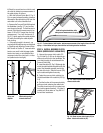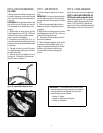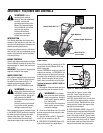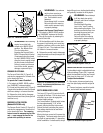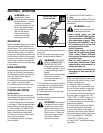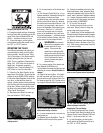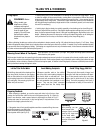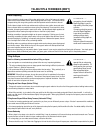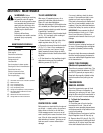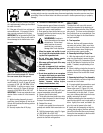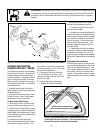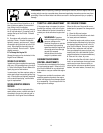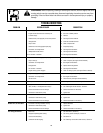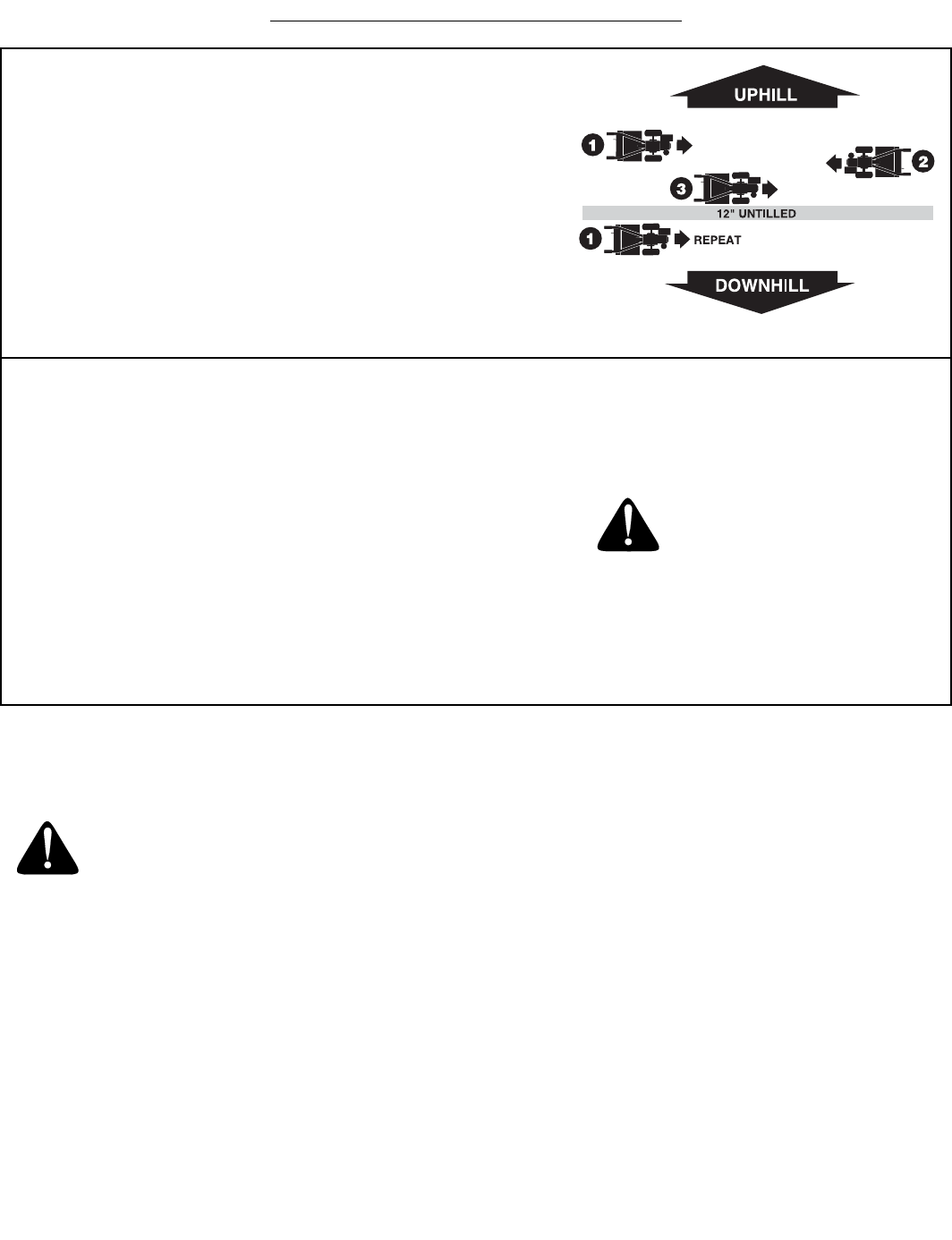
16
The tines have a self-clearing action which eliminates most tangling of debris in
the tines. However, occasionally dry grass, stringy stalks or tough vines may be-
come tangled. Follow these procedures to help avoid tangling and to clean the
tines, if necessary.
• To reduce tangling, set the depth regulator deep enough to get maximum
“chopping” action as the tines chop the material against the ground. Also, try to
till under crop residues or cover crops while they are green, moist and tender.
• While power composting, try swaying the handlebars from side to side (about
6" to 12"). This “fishtailing” action often clears the tines of debris.
• If tangling occurs, lift the tines out of the soil and run the tiller in reverse (if unit
is equipped with powered reverse) for a few feet. This reversing action should
unwind a good deal of debris.
Clearing the Tines
• It may be necessary to remove the debris by hand
(a pocket knife will help you to cut away the mate-
rial). Be sure to stop the engine and disconnect the
spark plug wire before clearing the tines by hand.
WARNING: Before clearing the
tines by hand, stop the engine, allow
all moving parts to stop and
disconnect the spark plug wire.
Remove the ignition key on electric
start models.
Failure to follow this warning could
result in personal injury.
Terrace Gardening (continued)
• To create a terrace, start at the top of the slope and work down. Go back and forth
across the first row as shown in Fig. 4-10.
• Each succeeding lower terrace is started by walking below the terrace you’re pre-
paring. For added stability of the tiller, always keep the uphill wheel in the soft, new-
ly tilled soil. Do not till the last 12" or more of the downhill outside edge of each
terrace. This untilled strip helps prevents the terraces from breaking apart and
washing downhill. It also provides a walking path between rows.
Fig. 4-10
LOADING AND UNLOADING
THE TILLER
WARNING: Loading and
unloading the tiller into a
vehicle is potentially hazardous
and we don’t recommend doing
so unless absolutely necessary,
as this could result in personal
injury or property damage.
However, if you must load or
unload the tiller, follow the
guidelines given next.
• Before loading or unloading, stop the en-
gine, wait for all parts to stop moving,
disconnect the spark plug wire and let the
engine and muffler cool.
• The tiller is too heavy and bulky to lift
safely by one person. Two or more people
should share the load.
• Use sturdy ramps and manually (engine
shut off) roll the tiller into and out of the
vehicle. Two or more people are needed to
do this.
• The ramps must be strong enough to
support the combined weight of the tiller
and any handlers. The ramps should pro-
vide good traction to prevent slipping; they
should have side rails to guide the tiller
along the ramps; and they should have a
locking device to secure them to the
vehicle.
• The handlers should wear sturdy footwear
that will help to prevent slipping.
• Position the loading vehicle so that the
ramp angle is as flat as possible (the less
incline to the ramp, thebetter). Turn the
vehicle’s engine off and apply its parking
brake.
• When going up ramps, stand in the
normal operating position and push the
tiller ahead of you. Have a person at each
side to turn the wheels.
• When going down ramps, walk back-
ward with the tiller following you. Keep
alert for any obstacles behind you. Posi-
tion a person at each wheel to control the
speed of the tiller. Never go down ramps
tiller-first, as the tiller could tip forward.
• Place wooden blocks on the downhill
side of the wheels if you need to stop the
tiller from rolling down the ramp. Also,
use the blocks to temporarily keep the tiller
in place on the ramps (if necessary), and to
chock the wheels in place after the tiller is
in the vehicle.
• After loading the tiller, prevent it from
rolling by engaging the wheels in the
WHEEL DRIVE position. Chock the wheels
with blocks and securely tie the tiller down.
TILLING TIPS & TECHNIQUES (CON’T)



